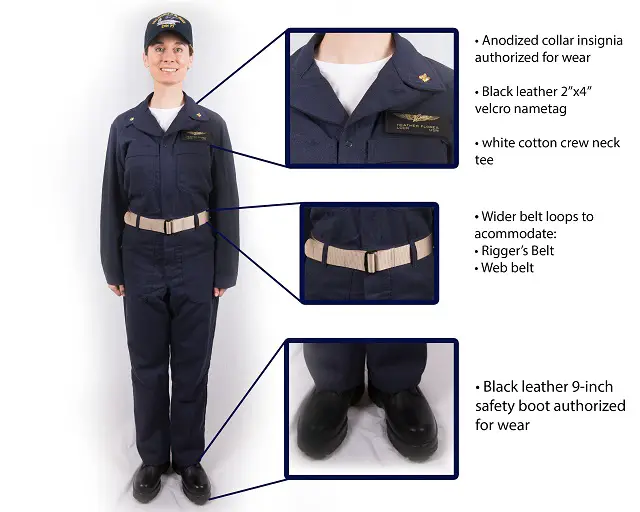Breaking news
US Navy New Improved Flame Resistant Variant (IFRV) Coverall for Sailors.
| 2017
|
|
|||
 NORFOLK, Va. (Jan. 19, 2016) Lt. Cmdr. Heather Flores, assigned to U.S. Fleet Forces Command, poses in the Improved Fire Retardant Variant (IFRV) coverall onboard Naval Support Activity Hampton Roads. The IFRV, made of a light weight, tri-fabric blend, is flame resistant and will replace the current flame retardant variant coverall in use by the fleet. (U.S. Navy photo illustration by Mass Communication Specialist 2nd Class Stacy M. Atkins Ricks/Released) NORFOLK, Va. (Jan. 19, 2016) Lt. Cmdr. Heather Flores, assigned to U.S. Fleet Forces Command, poses in the Improved Fire Retardant Variant (IFRV) coverall onboard Naval Support Activity Hampton Roads. The IFRV, made of a light weight, tri-fabric blend, is flame resistant and will replace the current flame retardant variant coverall in use by the fleet. (U.S. Navy photo illustration by Mass Communication Specialist 2nd Class Stacy M. Atkins Ricks/Released) |
|||
|
|
|||
|
USFF conducted coverall wear tests aboard three ships, amphibious assault ship USS Kearsarge (LHD 3), guided-missile destroyer USS Carney (DDG 64), and fast-attack submarine USS Newport News (SSN 750) during their recent deployments. Both a flight suit and traditional version were tested, with surveys taken both mid- and post-deployment. The results were overwhelmingly positive for the IFRV and favorable toward the traditional version of the coverall. In summary, 89 percent of respondents thought the IFRV looked better than the FRV; 86 percent thought it was more durable; 91 percent said it was more comfortable; and 85 percent thought it was cooler in hot climates. Overall, 91 percent of Sailors involved in the test thought the IFRV traditional coverall was an improvement over the FRV and 68 percent thought the same for the flight suit version. A data-driven decision was made to select the traditional coverall as the replacement for the FRV.
Like any other organizational clothing item, Sailors can expect to have their current FRV replaced by the ship over time at no additional cost to them. USFF is teaming up with NEXCOM and Defense Logistics Agency to introduce the IFRV coveralls to the fleet. The Navy's transition from the FRV to the IFRV coveralls is expected to take place after October. Additional guidance on a finalized roll-out plan, along with instructions on manner and occasion of wear, will be provided at a later date. Focus groups held during IFRV testing and the post-test surveys also revealed a desire among Sailors for a two-piece FR variant which can be worn at sea, in port, and off base to reduce the number of daily clothing changes. This data and feedback is informing a collaborative effort with NCTRF to prototype a more professional and modern two-piece variant with layering options to allow for de-blousing for certain evolutions and in hotter environments. Under layers may include flame resistant and drifire-style moisture wicking jerseys. The goal is to explore a two-piece variant that is sufficiently versatile to address the requirements of all afloat communities. To ensure Sailor feedback is incorporated to the maximum extent possible, these concepts and associated design features are being reviewed by focus groups in fleet concentration areas this month. |
|||



























